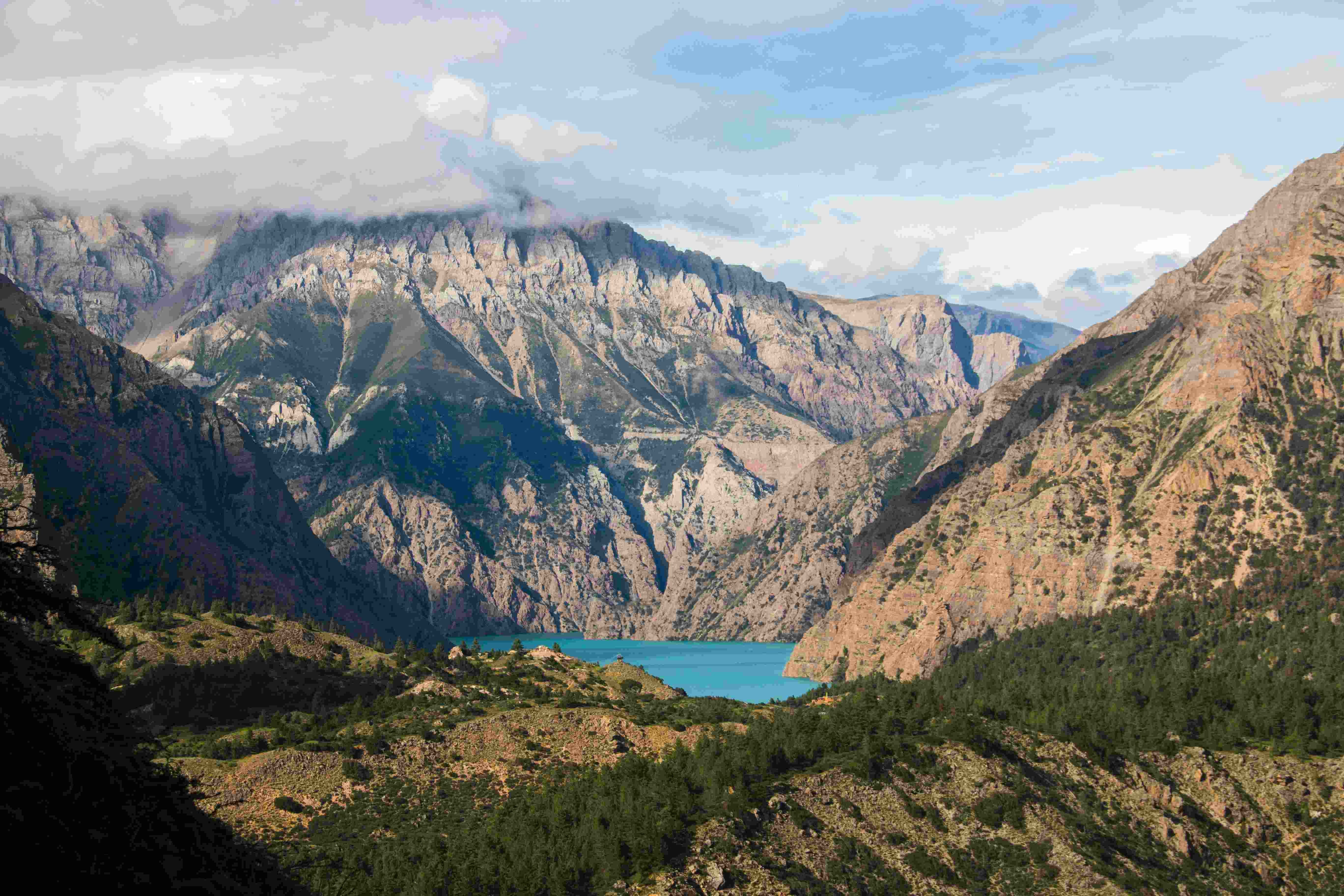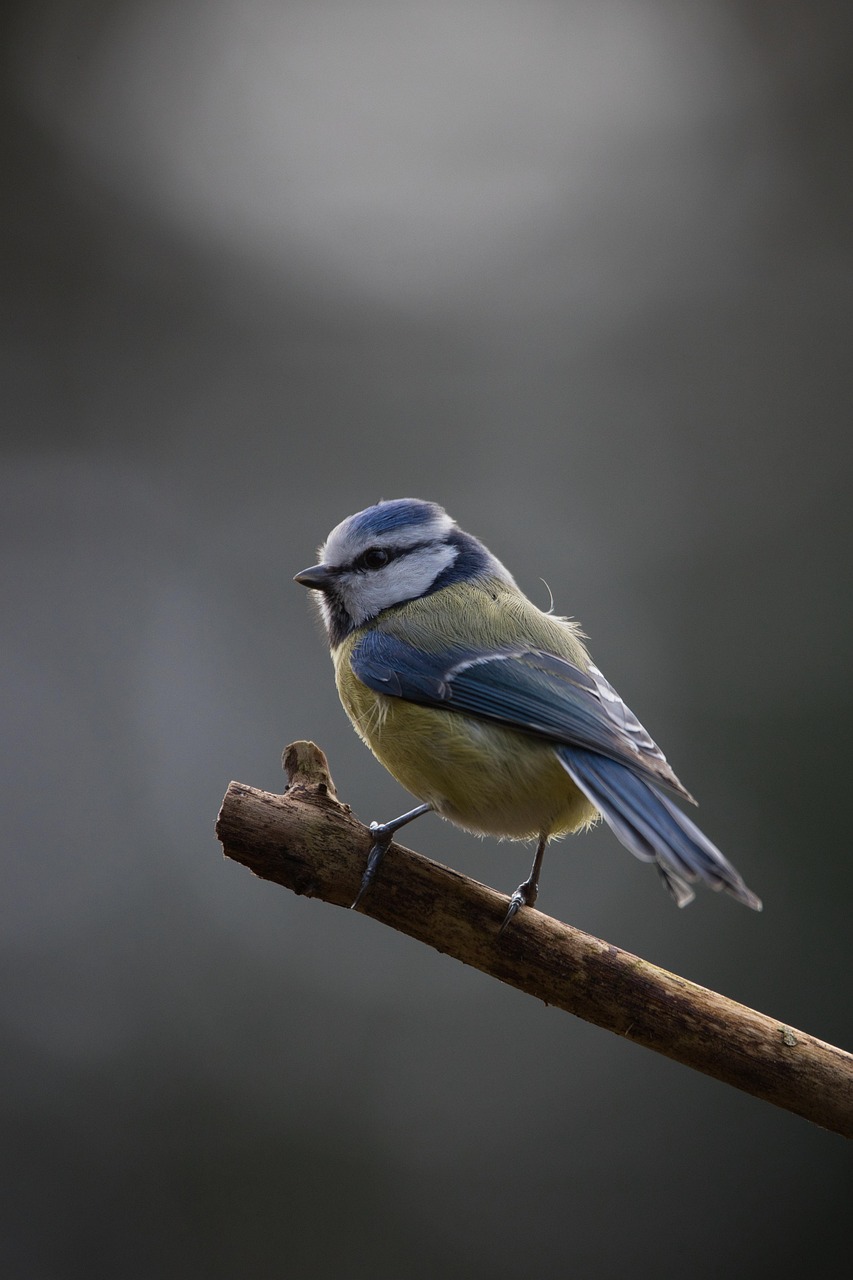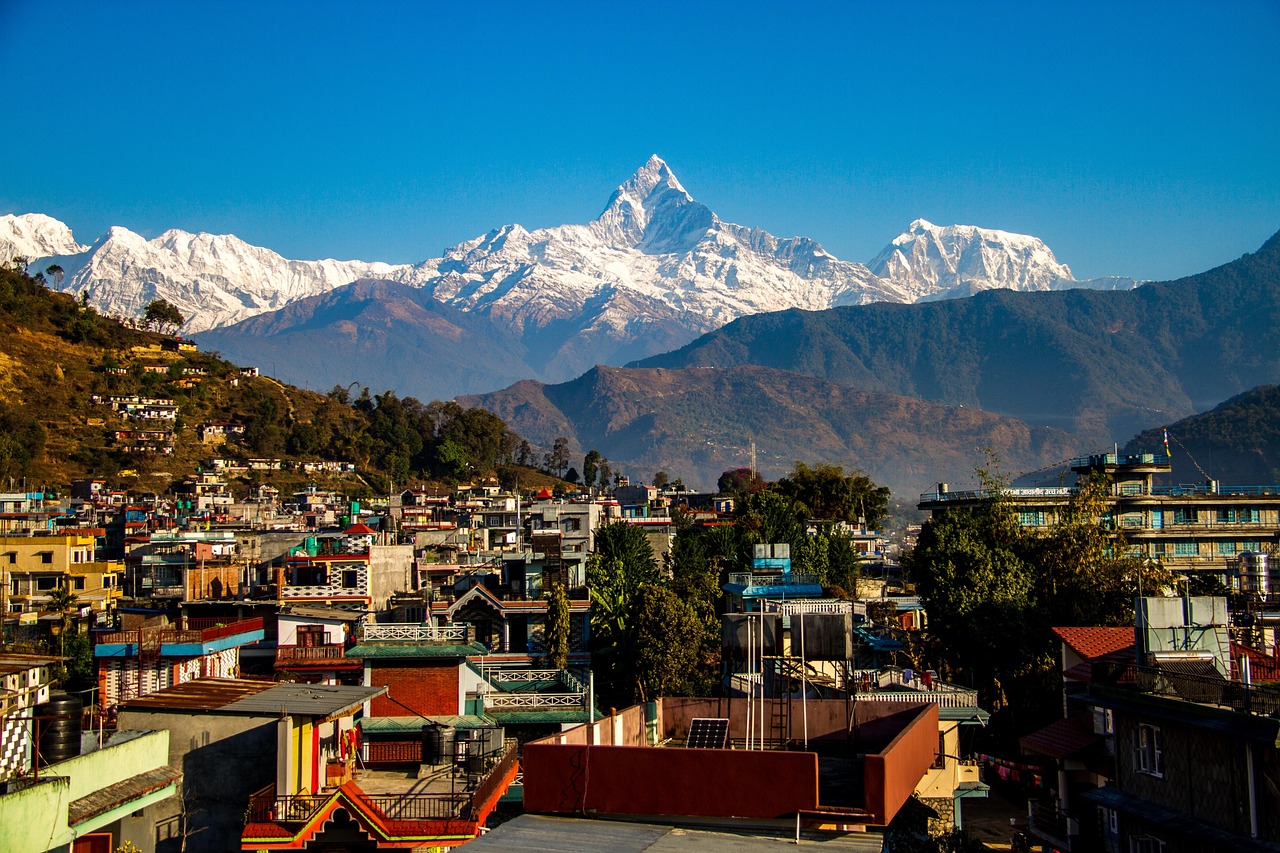
Visit Nepal 2025: Trekking, Culture & Travel Guide
Visit Nepal 2025: Complete Travel Guide – Trekking Routes, Cultural Gems & Sustainable Travel Tips
Introduction: Nepal – a land of breathtaking Himalayan peaks and a mosaic of cultures – is more accessible and exciting than ever. 🏔️ From Everest’s soaring summit to the ancient temples of Kathmandu, this guide covers everything you need to plan Nepal trip 2025. In 2025, Nepal’s natural wonders and vibrant heritage will be highlighted by the official Visit Nepal 2025 campaign, making it the perfect time to explore. According to travel experts, Nepal’s majestic landscapes and rich traditions are drawing global attention. Imagine hiking in the Annapurna foothills surrounded by rhododendron blooms, or sharing sweets during Dashain with friendly locals. 🌸🛕 This Nepal travel guide 2025 will help you plan an unforgettable adventure – from visa requirements and ideal seasons, to top trekking routes and sustainable travel tips – all in a friendly, easy-to-follow format. 😊✈️
Why Visit Nepal in 2025? 🌟
Nepal in 2025 offers more than just its natural beauty – the timing is ripe with special opportunities. First, tourism is booming again. In 2024 Nepal welcomed over 1.14 million international visitors (96% of pre-pandemic levels), and 2025 aims even higher. The country is investing in new airports (for example, the new Pokhara International Airport opened in 2023) and direct flights. Notably, a new charter flight from Chengdu to Pokhara inaugurated in 2024 is part of efforts to make Visit Nepal Year 2025 a success. The goal is to welcome 2 million tourists in 2025.
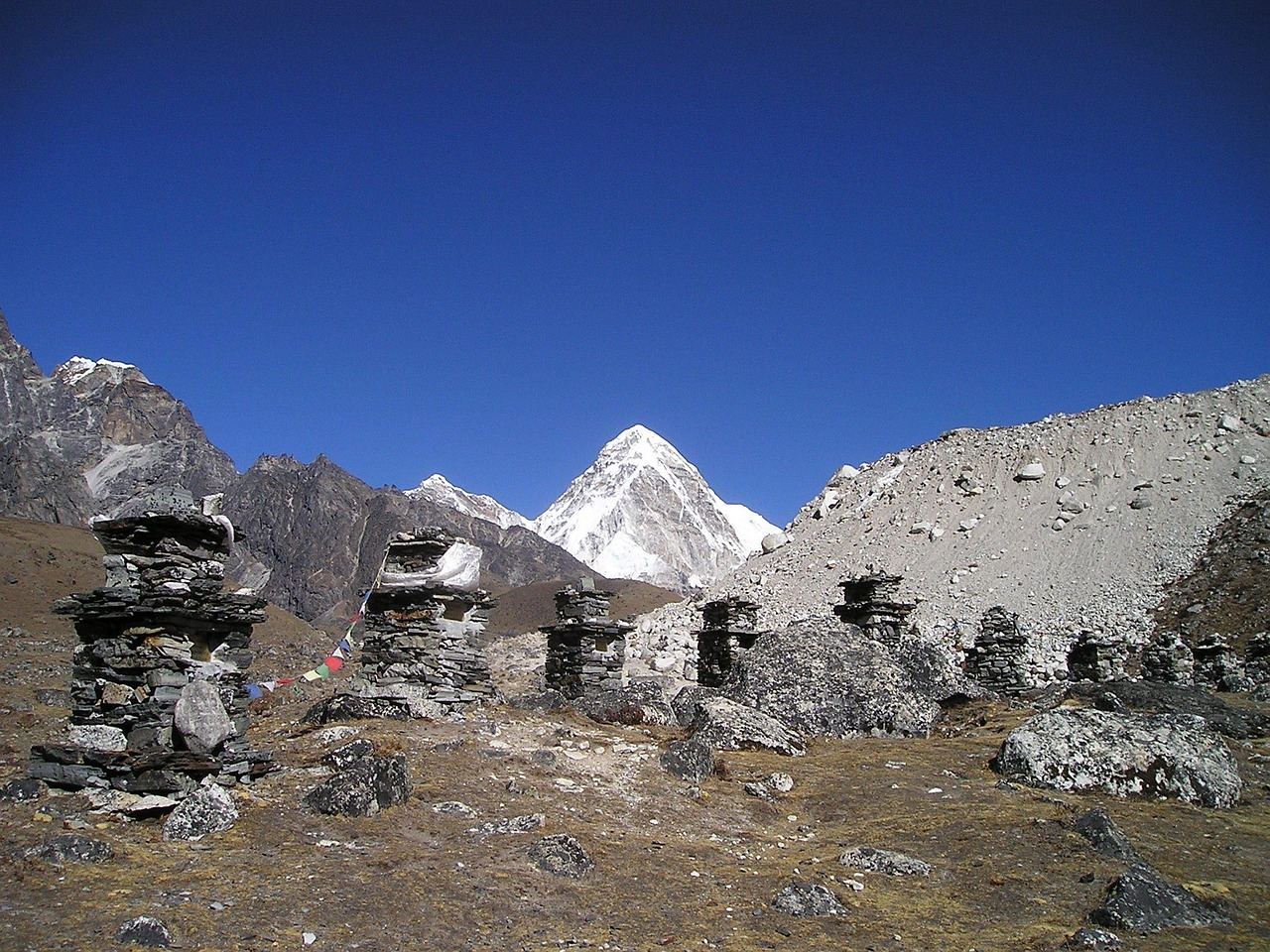
Chinese support is fueling tourism growth too – China’s government launched a “Visit Nepal 2025” campaign and even sent a 100-photographer team to showcase Nepal’s beauty. Moreover, Sagarmatha Sambaad (Everest Dialogue), a major international climate conference, will be held in Kathmandu in May 2025, bringing global leaders and extra attention to Nepal. In short, infrastructure improvements and big promotional events make 2025 a standout year.
Beyond events, Nepal’s timeless attractions keep travelers coming back. The Himalayas (home to 8 of the world’s 14 tallest peaks), lush jungles, and unique cultures are always compelling. New routes and experiences – from boutique homestays to eco-lodges – are popping up to meet demand. Combined with stable security and friendly local hospitality, these factors make 2025 an ideal year to visit Nepal. Whether you’re seeking adventure or cultural immersion, Nepal’s charm is undeniable – and now with special campaigns, it’s more accessible than ever. 🎉🏞️🌅
Best Time to Visit Nepal in 2025 🌤️
Nepal’s climate varies widely by season and region. In general, spring (March–May) and autumn (Sept–Nov) are considered the best times to visit. During spring, temperatures are mild and the hills burst with wildflowers and clear mountain views. Everest Base Camp and Annapurna treks are especially scenic in spring. Autumn is widely regarded as peak season – the skies are crisp and clear, festivals like Dashain and Tihar light up the country, and trekking routes see excellent vistas.
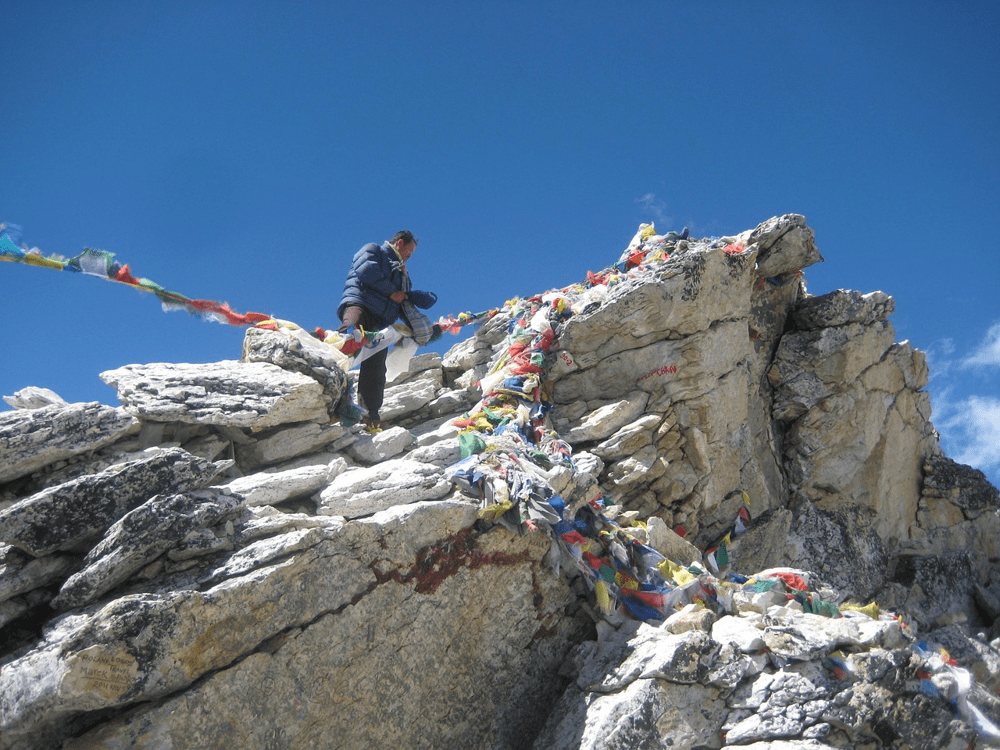
Spring (Mar–May): Warm days (16–23°C in Kathmandu) and blooming rhododendrons. Ideal for trekking and nature. Everest, Annapurna, and Langtang treks show off lush greenery and spectacular views. Holi (festival of colors) adds cultural vibrancy in March.
Monsoon (Jun–Aug): Rainy season, especially in lowlands. This means heavy rains in Kathmandu/Pokhara, but also verdant landscapes. Offbeat areas like Mustang and Dolpo lie in rain shadows and are excellent trekking options now. Rivers swell for thrilling white-water rafting. (Be prepared for leeches and slippery trails in the hills.)
Autumn (Sep–Nov): Best overall! Clear skies (8–24°C) make for phenomenal mountain views. This is peak trekking season and a festive time (Dashain/Tihar). Note popular trails fill up fast – book flights and lodges early.
Winter (Dec–Feb): Cold (day: 8–15°C in Kathmandu) but very quiet. Perfect for budget travelers and short treks to lower altitudes (e.g. Ghorepani/Poon Hill). Sightseeing in Kathmandu Valley and jungle safaris in Chitwan/Bardia are enjoyable with minimal crowds. Heavy snow can close high passes.
According to Nepal’s tourism board, spring and autumn are the safest bets for trekking, but Nepal can be explored year-round. When planning your Nepal trip 2025, consider the above seasons and match them to your interests (trekking vs. cultural tours vs. wildlife). Booking accommodations and permits in advance for high seasons is strongly advised.
Nepal’s Cultural Highlights 🏛️
Nepal’s culture is a vibrant tapestry of temples, traditions, and ethnic diversity. In the Kathmandu Valley alone there are seven UNESCO World Heritage sites – the Durbar Squares of Kathmandu, Patan and Bhaktapur, the stupas of Swayambhu and Boudhanath, and the temple of Pashupatinath. These historic sites showcase Nepal’s architectural legacy from pagoda-style temples to intricate wood carvings. A visit to Pashupatinath (sacred Hindu temple on the Bagmati River) or Boudhanath Stupa (giant Buddhist stupa) offers deep cultural insights.
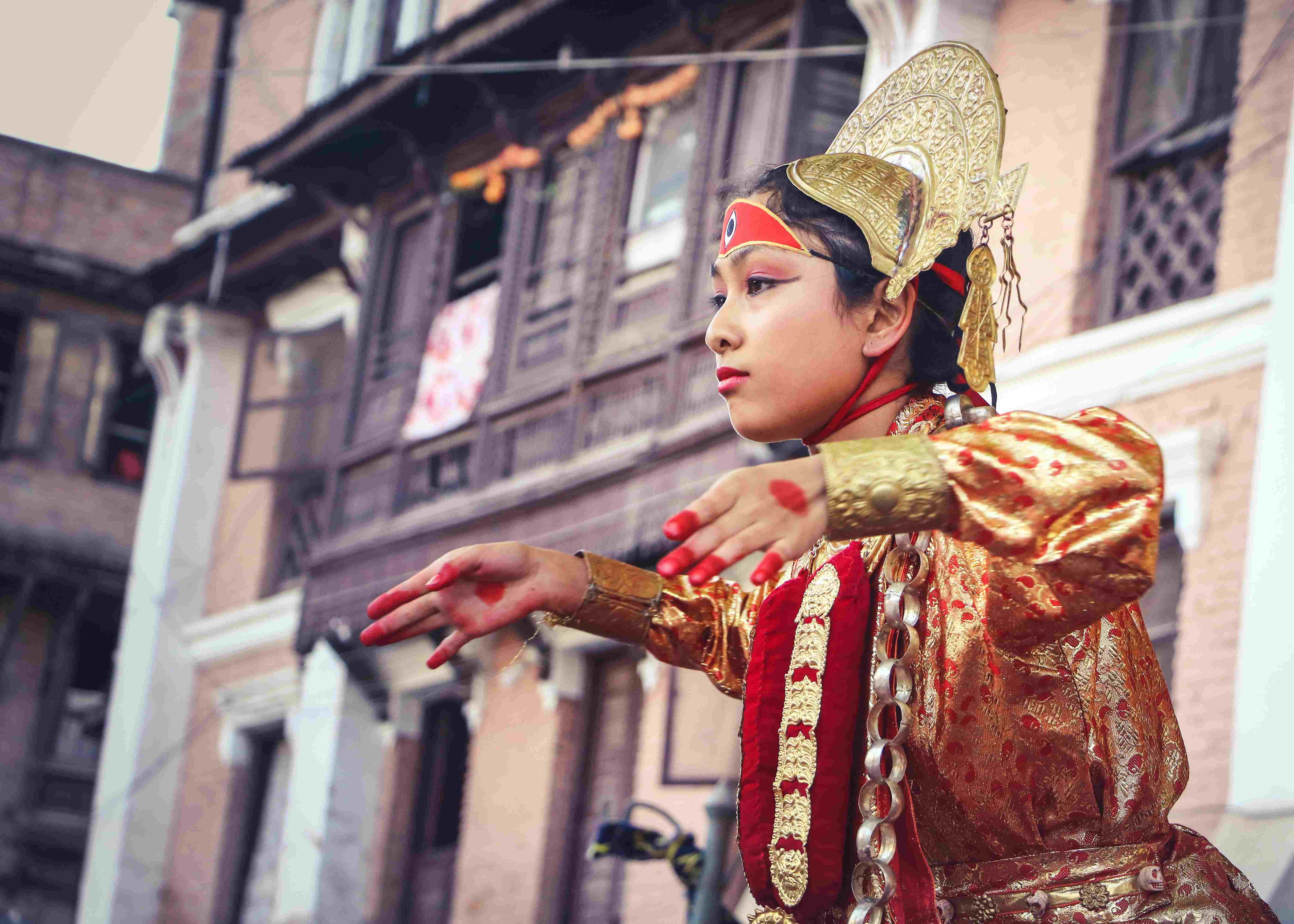
One unique tradition is the Kumari or Living Goddess. In Kathmandu’s Durbar Square, a young Newar girl is worshipped as an incarnation of the goddess Durga. Witnessing the Kumari procession or visiting the Kumari Bahal temple is a truly Nepali cultural experience. Nepalese life is also full of communal rituals – for example, many towns still use ancient stone water taps, where locals gather (as seen in Bhaktapur) to share daily chores.
Ethnic diversity is another hallmark. Nepal has over 120 languages and dialects, with major groups including Newar (Kathmandu valley), Gurung and Magar (Annapurna region), Sherpa and Tamang (Himalayan foothills), and more. Each group celebrates its own festivals, dances, and crafts. For example, Dashain (fall, honoring the goddess Durga) is Nepal’s biggest festival, while Tihar (the festival of lights) and Holi (colors in spring) are widely celebrated.
Nepal’s pilgrimage sites are also world-class. In the southern plains lies Lumbini, UNESCO-recognized birthplace of Lord Buddha. Here pilgrims visit the Maya Devi Temple and tranquil monastic zones. In northern Mustang, the ancient walled city of Lo Manthang and the sacred Muktinath temple (a pilgrimage site for Hindus and Buddhists) reveal Nepal’s Tibetan influence.
Finally, don’t miss everyday cultural flavors: Nepali cuisine and art. Staple foods like dal bhat (lentil soup with rice) and momos (dumplings) are delicious and nutritious, fueling treks and street snacks alike. Traditional crafts – handmade carpets, wood masks, and thangka paintings – reflect millennia of Hindu and Buddhist symbolism. Across Nepal you’ll hear folk music (from Gurung dohori songs to Sherpa chants) and see folk dances (Lakhey, Maruni, etc.) at festivals. Embrace local customs by saying “Namaste” with folded hands, removing shoes in temples, and asking permission before taking photos.
In short, Nepal’s cultural richness – from its temple-studded cities to tribal mountain villages – is as majestic as its mountains. Be ready to be amazed by friendly smiles and timeless traditions wherever you go! 🙏🎶🏯
Trekking in Nepal 2025: Routes & Tips 🥾
Nepal is synonymous with trekking, offering hundreds of routes for all levels. The classics include the Everest Base Camp Trek (14–18 days), the Annapurna Circuit Trek (14–21 days), and the Annapurna Base Camp (ABC) Trek (10–14 days). Other popular trails are the Langtang Valley Trek (7–10 days), Manaslu Circuit (14–18 days), Upper Mustang (14–16 days), and Kanchenjunga Base Camp Trek (16–21 days). Each route has its own flavor: Everest for Sherpa culture and towering peaks; Annapurna for pristine forests and diverse terrain; Mustang for desert landscapes and Tibetan villages; Manaslu/Tsum for isolation and rhododendron forests.
Key trekking tips and requirements:
Licenses/Guides Required: Nepal now mandates that all foreign trekkers hire a licensed guide or porter. Solo independent hiking is no longer allowed; this ensures safety and supports local jobs. Always check the latest rules before you go.
Permits: You’ll need special permits for trekking. For example, Annapurna Conservation Area (ACAP) and Sagarmatha National Park (Everest region) permits each cost about USD 25. Restricted regions like Upper Mustang or Dolpo require costly permits (~USD 500 for 10 days). Manaslu also requires a special permit (roughly USD 100 for one week). These fees help conservation and control crowds.
Physical Prep: Treks can be strenuous – plan some fitness training beforehand. Start with short hikes at home if you’re new. Gradually increase hike length and pack weight.
Acclimatization: Altitude sickness is a real concern. Always ascend slowly, include rest days (e.g. at Namche Bazaar on the EBC trek), and stay hydrated. Consider carrying Diamox (acetazolamide). If symptoms like headache or nausea persist, descend immediately. Travel insurance with high-altitude coverage (including helicopter evacuation) is mandatory.
Gear & Packing: Pack warm, layered clothing (nights can be freezing) and good trekking boots. Essential items include rain gear, a down jacket, trekking poles, headlamp, sun protection, and a quality sleeping bag rated to at least –10°C. Don’t forget a personal first-aid kit and water purification method (tablets or filter). Local tea-houses provide most meals – budget for about $20–$30/day for three meals. The ubiquitous dal bhat (rice/lentils) keeps you fueled.
Logistics: Most treks start from Kathmandu (via short flights or jeep) or Pokhara. High-season (autumn/spring) flights often fill up, so book early. Domestic flights in Nepal can be delayed by weather. Some approaches (e.g. Lukla or Jomsom flights) are famous for adventure but aren’t strictly required – teahouse treks from Kathmandu to EBC exist but add days.
Permits and Cards: Apart from permits above, you must pay the TIMS (Trekkers’ Information Management System) fee (~USD 20; some agencies include this). Carry passport photos for permits (many tea-houses or agencies handle the paperwork for you).
Tea Houses: Most routes have villages or tea houses along the way (basic guesthouses with simple meals). Facilities improve each year. If you go very remote (e.g. Kanchenjunga or lower Dolpo), camping is needed. For Annapurna and Everest treks, expect 2-3 hot meals and a bed each night. Standard amenities (sheets, electricity, wifi) vary – bring charging cables and an adapter.
Waste and Wildlife: Always follow “Leave No Trace” – pack out any trash or wrap leftovers in paper, and never feed animals. Burn plastic waste where possible. Watch out for wildlife (snow leopard, musk deer) in conservation areas, but do not approach or disturb animals. Respect local sites and villagers’ privacy.
For those who prefer assistance, guided trek packages are available. Nepal Yetiraj Treks, for example, offers well-reviewed programs for all major trails. They handle permits, logistics, and guide arrangements so you can focus on the journey. Whether you’re doing Everest Base Camp or a lesser-known circuit, going with experienced guides ensures safety and insight.
In short, Nepal trekking routes 2025 range from easy 2–3 day walks to epic 3-week expeditions. Plan your itinerary according to season, fitness, and interest. Do your homework on permits, pack sensibly, and acclimatize carefully. With proper preparation, trekking in Nepal is a life-changing adventure – every trail rewards you with incredible mountain scenery and warm Nepali hospitality. 🥾🏔️
Adventure Beyond Trekking 🚣♂️
Nepal is not just about trails – it’s an outdoor playground! Beyond hiking, you’ll find a host of adrenaline and nature activities:
Paragliding: Soar like a bird over the Annapurna range and Pokhara valley. Tandem paragliding from Sarangkot hill offers breathtaking aerial views of the Himalayas, Phewa Lake, and lush green valleys. Flights take off year-round (best Sep–May) and last ~20-30 minutes.
Whitewater Rafting: Nepal’s rivers carve exciting rapids. The Trishuli and Seti rivers (near Pokhara) offer beginner-to-intermediate rafting. The Sun-Koshi and Bhote Koshi rivers provide extreme class IV–V white water thrills. Monsoon months (Jun–Aug) boost river volume for added excitement. Most lodges and operators in Pokhara or Kathmandu arrange rafting trips by the day.
Bungee Jump & Zipline: Pokhara boasts the world’s highest commercially operated bungee jump (~160m) over a river gorge. Nearby, Nepal’s “First Canyon” has a 1.8 km zipline – one of Asia’s longest! These are must-do thrills for adventure seekers.
Mountain Biking: Nepal’s roads and trails are a mountain biker’s dream. Ride scenic highland routes, like the old Annapurna trail from Kathmandu to Pokhara, or downhill from Kulekhani Dam. Plenty of outfitters rent bikes and offer guided tours.
Wildlife Safari: Venture into the jungles of Chitwan or Bardia National Park (Terai lowlands). Here you’ll find Bengal tigers, one-horned rhinos, elephants, leopards, and hundreds of bird species. Join a jeep or elephant safari and stay in jungle lodges. Chitwan (a UNESCO site) is more developed, while Bardia offers wilder, more remote safaris. A short wildlife break (2–3 days) can be added to any itinerary.
Cultural & Scenic Tours: Take a scenic flight around Everest (daily flights from Kathmandu circle the peak at 5,500m for spectacular views). Or a helicopter tour (e.g. one-day Everest Base Camp) for an ultra-luxury taste of the mountains. Tour the terraced hills of central Nepal (Bandipur village is a charming example). Visit sacred sites like Muktinath and Kailash Mansarovar (via trekking or drive). Kathmandu’s countryside (e.g. Changunarayan and Dhulikhel) offer hiking and sunrise vistas just a short drive from the city.
Given Pokhara’s prominence as an adventure hub, a Pokhara Tour is highly recommended. “Pokhara is Nepal’s ultimate travel destination, offering breathtaking mountain views, serene lakes, thrilling adventure activities, and rich cultural heritage”. Spend 2–3 days there: paraglide, kayak on Phewa Lake, hike to World Peace Pagoda for sunrise, and stroll Lakeside’s cafes.
No matter your interest – whether it’s canyoning, yoga retreats by the lakeside, zip-lining across gorges, or just enjoying Nepali cuisine with a mountain view – Nepal has it. These adventures beyond trekking ensure every traveler can find excitement in the Himalayas. 🚵♂️🎒🍃
Planning Your Trip: Practical Tips 📋
To make your Nepal trip smooth, take care of logistics and preparation:
Visa & Entry: Most visitors (including US/European/Indian nationals) can get a Nepal tourist visa on arrival at Kathmandu airport or border crossings. You fill out a form and pay the fee in cash. Typical visa fees are roughly USD 30 for 15 days or USD 50 for 30 days. (Longer stays cost more.) Tip: Apply for a Nepal visa online in advance to save queue time. Make sure your passport is valid for at least 6 months from entry.
Permits: As mentioned, trekking permits and park fees should be budgeted. Agencies can arrange these for you. For jungle (Chitwan/Bardia) you’ll need a separate national park entry permit (~$10).
Health & Safety: There are no mandatory vaccines for Nepal unless arriving from a yellow-fever country, but Hepatitis A, Typhoid, and routine shots (MMR, DPT, etc.) are recommended. Tap water isn’t safe – always drink bottled or treated water (many trekkers use purification tablets). Tap into Plan Nepal trip 2025 checklist: pack a basic first-aid kit, altitude sickness tablets, sunblock, and water treatment. Purchase travel insurance that covers emergency evacuation – emergencies can happen in remote areas. Always hike with a guide or group, and inform someone of your itinerary. Stay aware of daily weather and landslide risks.
Money Matters: The Nepali currency is the Nepalese Rupee (NPR). 100 NPR ≈ 0.75 USD (as of 2025). Cash is king outside big cities. Credit cards work in upscale hotels and many shops in Kathmandu/Pokhara, but carry enough cash for small towns and markets. ATMs are available in all cities, but may run out of dollars/NPR during peak season. Carry a mix of USD and NPR, and exchange only at official counters. Tipping is customary in Nepal – about 10-15% in restaurants or USD 2–5 per person for guide/porter tips. Bargaining on souvenirs in markets (Thamel/Kathmandu, etc.) is expected.
Packing & Luggage: Travel light if possible. Nepali airlines strictly enforce baggage limits. Use backpacks or duffels for trekking (15–20kg checked is ample). Carry essential items (chargers, medicines, documents) in your daypack. In cities, casual clothes are fine, but modest attire is appreciated in temples (cover shoulders/knees). In high-altitude or winter treks, bring warm layers, hat, gloves, and insulated jacket. Sunscreen and sunglasses are vital above 3,000m.
Getting Around: Kathmandu is the main hub. For major tourist destinations, flights can save time – e.g. Kathmandu–Lukla for Everest, Kathmandu–Pokhara for Annapurna. Domestic flights are operated by several airlines, but they can be delayed by weather, so plan buffer days. Tourist buses are the cheapest way to travel between cities (famous routes: Kathmandu–Pokhara, Kathmandu–Chitwan, Pokhara–Chitwan). These are long journeys on winding roads but offer views. Private jeeps can be hired for flex and comfort. Local buses and microbuses connect to smaller towns. Note: There are no trains within Nepal (except a cross-border line to India at one point), so overland trips rely on vehicles.
Communication: Nepali is the official language, but English is widely spoken in tourist areas. Learn some Nepali greetings (Namaste, Dhanyabad “thank you”) – locals appreciate the effort. SIM cards (NTC or Ncell) are cheap and offer 4G service in cities and most trekking areas. You must show your passport to register a SIM. Wi-Fi is available in many hotels and teahouses, though it may be slow. Power outlets use types C, D, and M plugs; bring a universal adapter. Expect frequent power cuts in remote areas.
Cultural Etiquette: Respect local customs. Dress modestly (especially women in rural areas; shoulders and legs covered at temples). Remove shoes before entering homes or shrines. Public displays of affection are frowned upon. Always ask before photographing people, especially monks or women. Learn a few Nepali words – a friendly “Namaste” goes a long way.
Safety: Nepal is generally safe for travelers. Petty theft can happen – use hotel safes and keep valuables secure. Follow trekking rules and weather warnings. Always register your trek with local authorities or your guide.
By planning ahead (visa, permits, insurance) and packing smartly, you’ll handle Nepal’s challenges. This preparation ensures you can focus on enjoying Nepal’s wonders. 🌐🧳👟
Sustainable Tourism in Nepal
Nepal is taking big strides toward eco-friendly travel, and as visitors you can play a part. The tourism industry in 2025 is prioritizing sustainability, with initiatives to minimize the footprint on fragile Himalayan environments. For example, many trekking agencies now offer carbon-neutral trek options – guides pledge to offset the carbon of your trek by planting trees along the trail. Some lodges and tea houses are built or retrofitted as eco-lodges, using solar power and green waste management.
What can you do as a traveler?
Avoid plastic waste: Nepal has banned single-use plastic bags and encourages refillable water bottles. Carry a reusable bottle and purify water rather than buying endless plastic bottles. Dispose of waste responsibly: pack out plastics and bring them back to town for recycling or proper disposal.
Support local: Stay in family-run guesthouses or homestays. Eat local produce at village eateries. Hire guides, porters, and drivers from local communities (this distributes tourism income widely). By choosing locally-owned services, you help sustain Nepali families and preserve culture.
Respect nature & culture: Stick to marked trails to prevent soil erosion. Do not disturb wildlife or climb on fragile forests. Ask permission before taking photos of people or sacred sites. Be mindful of religious practices and dress codes. Small gestures of respect go a long way in helping communities accept tourism.
Energy & water: Take short showers and reuse towels. Many lodges heat water only on request. Carry a flashlight to conserve battery, or turn off lights and electronics when not needed. All these reduce the strain on local resources.
Use ethical companies: Book with operators that follow sustainability principles. For example, Nepal Yetiraj Treks emphasizes responsible tourism – they have a strict “no plastic” policy and ensure fair wages for staff. Check for certifications like the Responsible Tourism Initiative (Nepal’s own program) or EarthCheck compliance.
Following these guidelines not only protects Nepal’s environment, but also ensures its natural and cultural treasures remain for future travelers. In Nepal you’ll find that kindness and sustainability go hand-in-hand – trekking among pristine mountains feels even more rewarding knowing you left the path as beautiful as you found it. 🌱🌎
Hidden Gems & Less Crowded Destinations ✨
While Everest and Annapurna draw the crowds, Nepal has many lesser-known treasures where you can escape the tourist trail. Venture off the main routes to discover serene lakes, remote valleys and quaint villages:
Rara Lake: Nepal’s largest lake sits in far-western Nepal (Rara National Park). Its crystal-blue waters and peaceful forests are accessed via a rewarding trek. In spring the slopes burst with alpine flowers.
Upper Dolpo (Shey-Phoksundo): This remote western region, closed to foreigners until the 1990s, is a world apart. Trekking here takes you past Shey-Phoksundo Lake, a turquoise alpine lake, amid Tibetan-style villages and snow leopards.
Ilam & Eastern Hills: In eastern Nepal, the town of Ilam and its tea gardens feel like a Nepali Shire. Rolling green hills and cooler climate provide a pleasant retreat. You can tour tea estates, hike forest trails or sample local cheese (Nepal’s only large-scale cheesery is here).
Kanchenjunga Region: On the far eastern border is the hidden kingdom of Kanchenjunga. Treks here (20+ days) offer incredible views of the world’s 3rd-highest peak, but very few travelers make the journey.
Tsum & Rolwaling Valleys: North of Kathmandu, these long valley treks are quiet and cultural, inhabited by Tamang and Sherpa villages steeped in Tibetan Buddhism. They were restricted areas until recently, so trails are less crowded.
Offbeat Cultural Tours: Visit the hilltop town of Bandipur or the medieval city of Tansen, both charming with far fewer tourists than Pokhara or Bhaktapur. Explore the far-western heritage in Palpa (Tansen) or the Kali Gandaki gorge in Upper Mustang.
Wildlife Safari (Bardiya): While many go to Chitwan, Bardiya National Park in the west is far less visited but equally wild – tiger, rhino, elephants and more roam its forests. A jungle lodge stay here feels frontier-like.
As one travel guide notes, Nepal’s hidden gems range “from the serene waters of Rara Lake and the untouched wilderness of the Dolpo Region to the tranquil Ilam Tea Gardens”, along with adventures in Kanchenjunga, Manaslu, Mustang and others. In short, the real Nepal awaits beyond the crowds – whether you’re discovering remote temples, secret viewpoints, or simply enjoying an empty mountain trail under the Himalayan sky. 🏞️🌲
Nepal in 2025: Events & Special Opportunities 📅
Looking ahead to 2025, keep an eye on these special events and openings:
Sagarmatha (Everest) Summit 2025: Nepal will host Sagarmatha Sambad, a global climate summit, in Kathmandu (May 16–18, 2025). This high-profile event (attended by international leaders) will focus on mountain ecosystems and climate action. It’s a chance to witness Nepal as a climate champion.
Visit Nepal Year 2025: Throughout 2025, Nepal’s tourism board – in partnership with friends like China – is running Visit Nepal 2025. Expect colorful festivals, photo exhibitions, and marketing events worldwide. For instance, Nepal recently collaborated with Chinese artists under the “Lens on Nepal” program to celebrate the 70th anniversary of Nepal-China ties. These efforts may mean festive celebrations in Kathmandu, cultural exchanges, and even travel discounts for 2025 bookings.
New Connectivity: The Pokhara and Gautam Buddha (Bhairahawa) international airports are fully operational, opening Nepal’s western regions to direct foreign flights. (In 2024, the first direct flight from Lhasa landed in Pokhara, a milestone for Tibet-Nepal links.) More direct routes make multi-destination travel easier in 2025.
Cultural & Sports Festivals: Major national festivals (Dashain, Tihar) in 2025 will be celebrated with their usual grandeur. Check the Nepal calendar for event dates. Additionally, Nepal occasionally hosts international events (mountain film festivals, running races, etc.) – keep an eye on travel news sites.
Environmental Initiatives: Nepal continues its plastic ban on mountain trails and promotes clean-up campaigns. 2025 may bring more community eco-projects (like glacial monitoring or biodiversity workshops) that travelers can support or participate in.
In sum, 2025 promises to be a banner year for Nepal tourism – a fusion of major events, new travel infrastructure, and a renewed welcome to visitors. Be part of it by timing your trip for these festivities or simply enjoying the improvements in travel access. 🎊✈️🏔️
Sample Itineraries for 2025 🗺️
To jump-start your planning, here are a few sample trip outlines. (Adjust lengths and activities based on your interests and pace.)
7 Days – Classic Highlights: Kathmandu → Chitwan → Pokhara → Kathmandu. (Day 1-2: Explore Kathmandu’s Durbar Square, Swayambhu and Pashupatinath. Day 3-4: Jungle safari in Chitwan (elephant or jeep safari). Day 5-6: Fly or drive to Pokhara – sunrise at Sarangkot, boating on Phewa Lake, relax. Day 7: Back to Kathmandu for departure.)
10 Days – Hill Country Trek & Culture: Kathmandu → Ghorepani/Poon Hill Trek → Pokhara → Kathmandu. (Day 1-2: Kathmandu sightseeing. Day 3-6: Drive to Ghandruk, trek 4 days via Ghorepani/Poon Hill for Annapurna views. Day 7: Return to Pokhara for rest. Day 8: Optional paragliding or relax. Day 9: Travel back to Kathmandu. Day 10: Departure.)
14 Days – Everest Adventure: Kathmandu → Lukla/EBC Trek → Chitwan (optional) → Kathmandu. (Day 1: Kathmandu. Day 2: Fly to Lukla, trek to Namche Bazaar. Day 3-8: Trek Namche→EBC→Gorak Shep→Kala Patthar→Lukla (acclimatization included). Day 9: Fly back to Kathmandu, then to Chitwan. Day 10-11: Safari at Chitwan NP. Day 12: Back to Kathmandu for rest. Day 13: Optional daytrip (Bhaktapur, Nagarkot). Day 14: Departure.)
5–7 Days – Cultural Circuit: Kathmandu → Patan/Bhaktapur → Bandipur → Pokhara. (Day 1: Kathmandu temples. Day 2: UNESCO sites in Patan & Bhaktapur. Day 3: Drive to Bandipur (charming hilltop town). Day 4: Explore Bandipur, drive to Pokhara. Day 5: Pokhara highlights. Day 6-7: Return to Kathmandu or fly out.)
4 Days – Spiritual Journey: Kathmandu → Lumbini → Pokhara (or Nagarkot). (Day 1: Kathmandu. Day 2: Fly or drive to Lumbini, visit Maya Devi temple, monasteries. Day 3: Travel to Pokhara or Nagarkot for Himalaya views. Day 4: Return to Kathmandu.)
These itineraries can be customized – for instance, swap Annapurna Circuit or Everest Base Camp for shorter treks, or extend any stop. For organized trips, see Nepal Yetiraj’s tours like the Bandipur Tour (2-3 days heritage) or the Lumbini Tour package. Each plan is a template – mix adventure with culture as you wish!
Conclusion & Call-to-Action 🚀
Nepal in 2025 is calling with unparalleled adventure, culture, and natural beauty. From world-class treks (“Nepal trekking routes 2025”) to hidden temples and eco-friendly tours, the options are endless. We hope this guide has given you the insights to confidently plan your Nepal trip 2025 – whether that means summiting viewpoints, celebrating festivals, or treading lightly through forests.
Ready to make Nepal your next destination? Start by securing your visa and flights, then book any guides or tours. Consider reaching out to experts like Nepal Yetiraj Treks for personalized packages and insider tips. Explore their [package list] or [Pokhara Tour] to jump-start your adventure planning. (They offer tailored itineraries for all budgets and styles.)
Nepal awaits you with open arms – lush valleys, snowy peaks, smiling people, and a journey you’ll never forget. So grab your backpack 🧳, lace up your boots 🥾, and visit Nepal 2025 for the adventure of a lifetime! 🌏❤️
Ready to dive deeper? Check official sources and travel experts before you go – and then get out there and experience Nepal for yourself!
Sources: Authoritative tourism guides, Nepal government and tourism board publications, and Nepal travel experts. (Sources: Authoritative tourism guides, Nepal government and tourism board publications, and Nepal travel experts

